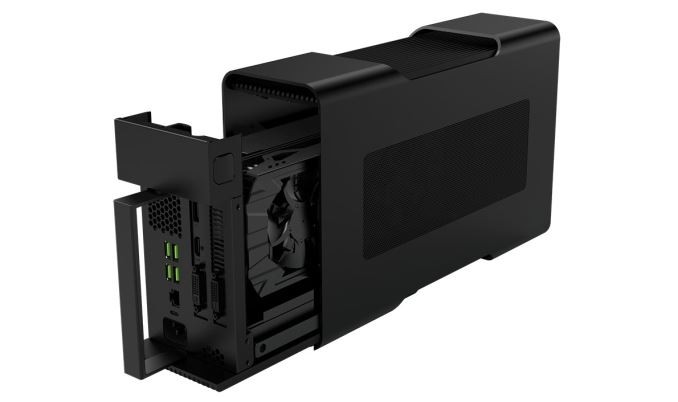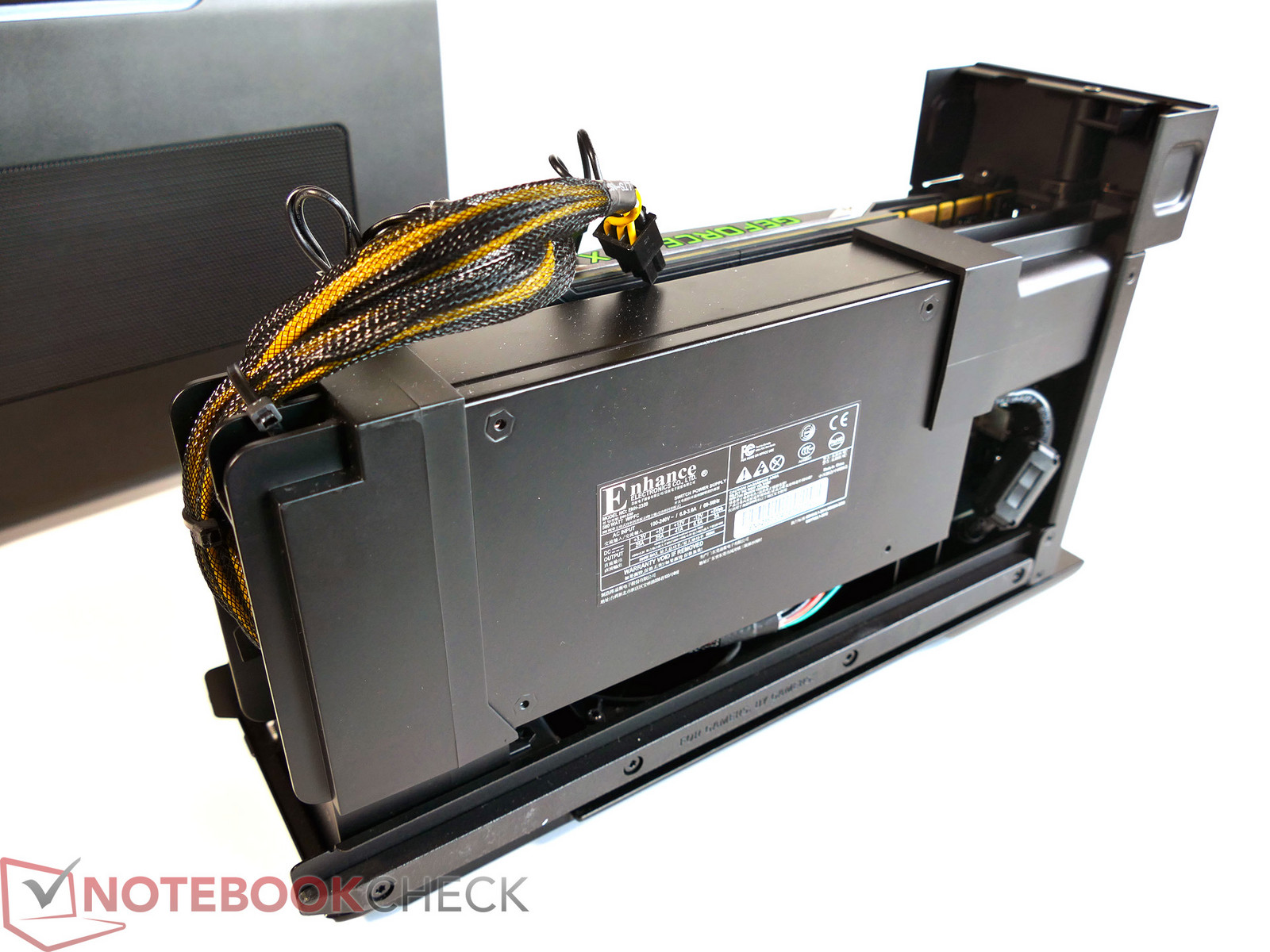

- EXTERNAL GPU ENCLOSURE RAZER FULL
- EXTERNAL GPU ENCLOSURE RAZER PC
- EXTERNAL GPU ENCLOSURE RAZER SERIES
The outer casing feels like aluminum which gives it a robust and sturdy feel.

It measures 6.6" x 14.7" x 9" (168mm x 374mm x 230mm) and weighs in at slightly over 14 lbs. From the front, immediately noticeable is just how big this thing is. Now that we understand how this box works on the inside, let's take a look at the physical design. Check out our PCIe benchmark to see how different generations and slot widths affect GPU performance. That's where the "up to 4 lanes of PCIe gen 3.0 traffic" rating comes in. Since Thunderbolt employs 8b/10b encoding (10 bits are sent over the wire for every 8 bits of data to help with error correction), the usable bandwidth is further reduced to 25.92Gbps. Subtracting that, we're left with 32.4Gbps for our PCIe traffic. This is always reserved regardless of whether or not it's actually being used. Thunderbolt 3 has 8 lanes of dedicated DisplayPort bandwidth. That 40Gbps number seems fast, but it gets quickly reduced when we start to dig a little deeper. They run at, you guessed it, the same 40Gbps.

EXTERNAL GPU ENCLOSURE RAZER SERIES
Intel has some newer generations of controllers, the 7000 series and 8000 series, but they haven't seen much adoption yet. In fact, essentially every eGPU on the market uses one of these two chips. The Razer Core V2 that we reviewed in 2018 used two of the previous generation DSL6540 chips which ran at the exact same 40Gbps speed.
EXTERNAL GPU ENCLOSURE RAZER FULL
The chip still supports the full bandwidth of Thunderbolt 3. The JHL6540 chip is a bit old with Intel now on the 8000 series controllers that support PCIe Gen 4.Īlthough the brains of the Core X are about 5 years old, that's not necessarily a bad thing. That chip supports up to 4 lanes of PCIe Gen 3 traffic, a DisplayPort interface, and an additional port that can carry USB 3.1 Gen 2 or DisplayPort. The Razer Core X specifically uses a JHL6540 Thunderbolt 3 controller. Just two active components and a power supply. There's also a USB-C controller thrown in the mix to manage the connection. They all use an Intel Thunderbolt controller which takes in PCIe signals on one end and spits out Thunderbolt on the other end. The way these devices work is quite simple. Making sense of the Thunderbolt connection There's no vendor lock between Razer laptops and Razer eGPUs, we just happen to be using parts from the same brand to test with today. Keep in mind that since Thunderbolt and PCIe are both industry standards, you can use any eGPU with any supporting laptop. Of course, you need a compatible laptop to make use of the enclosure, so we'll be using the Razer Book 13 that we recently reviewed. Putting this design into practice, today we'll be taking a look at Razer's Core X external GPU enclosure. This allows for a connection between PCIe devices and Thunderbolt-enabled laptops with a single controller chip. Intel and Apple designed Thunderbolt as just a fancy wrapping of the PCIe and DisplayPort interfaces in an external cable. The laptop then sends programs that need strong graphics power to run on that box.Īll eGPUs on the market currently use the Thunderbolt interface.

Basically you put a desktop GPU in a special box and then plug that box into your laptop. These products, known as eGPUs, are an easy way to bring enhanced graphics performance to laptops without discrete graphics. However, the advent of modern high-speed external interfaces such as Thunderbolt has allowed for the integration of desktop-class graphics cards with laptops.
EXTERNAL GPU ENCLOSURE RAZER PC
If you require strong PC gaming performance, traditionally that meant a desktop was your only option.


 0 kommentar(er)
0 kommentar(er)
